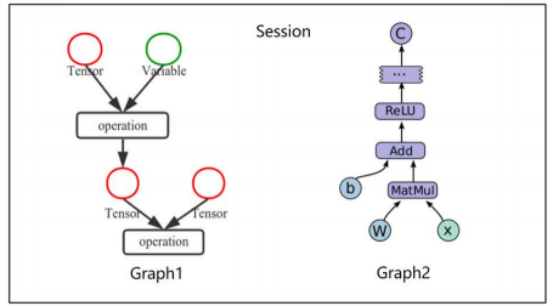1、基本概念(Tensorflow)
- 使用图(graphs)来表示计算任务 n
- 在被称之为会话(Session)的上下文(context)中执行图 n
- 使用tensor表示数据 n
- 通过变量(Variable)维护状态 n
- 使用feed和fetch可以为任意的操作赋值或者从其中获取数据

Tensorflow是一个编程系统,使用图(graphs)来表示计算任务,图(graphs)中的节点称之为op (operation),一个op获得0个或多个Tensor,执行计算,产生0个或多个Tensor。Tensor 看作是 一个 n 维的数组或列表。图必须在会话(Session)里被启动。
下面是一个简单的TF(tensorflow)程序:
1 __author__ = "WSX" 2 import tensorflow as tf 3 4 m1 = tf.constant([[3,3]]) #创建常量OP 5 m2 = tf.constant([[1],[1]]) 6 product = tf.matmul(m1,m2) #创建矩阵乘法的OP 7 8 print("product:",product) #tensor类型 9 10 11 #开始定义会话 12 sess = tf.Session() 13 result = sess.run(product) 14 15 print(""" 16 result:%s 17 result_type:%s 18 """%(result ,type(result))) 19 sess.close() 20 21 # with tf.Session() as sess: 22 # sess.run(product)